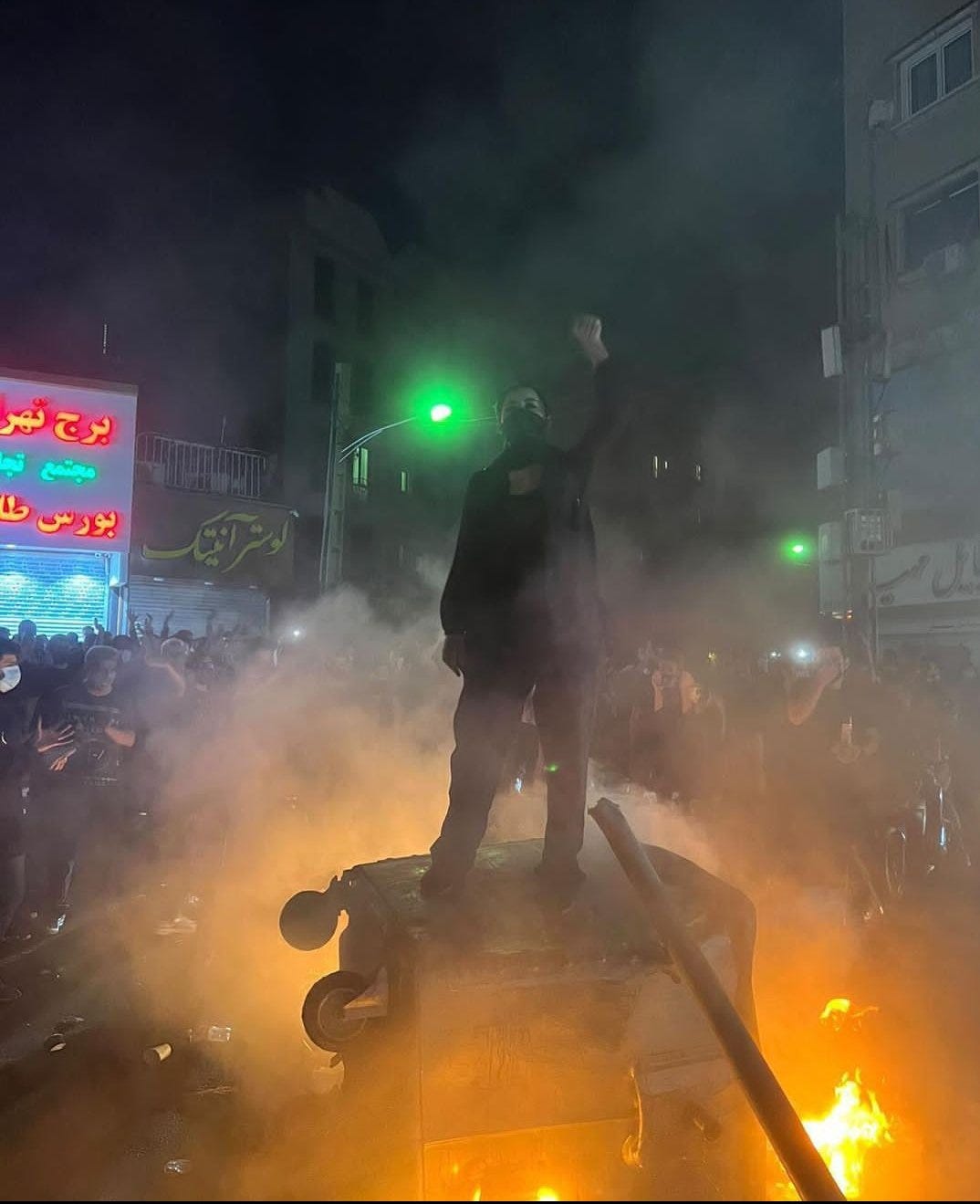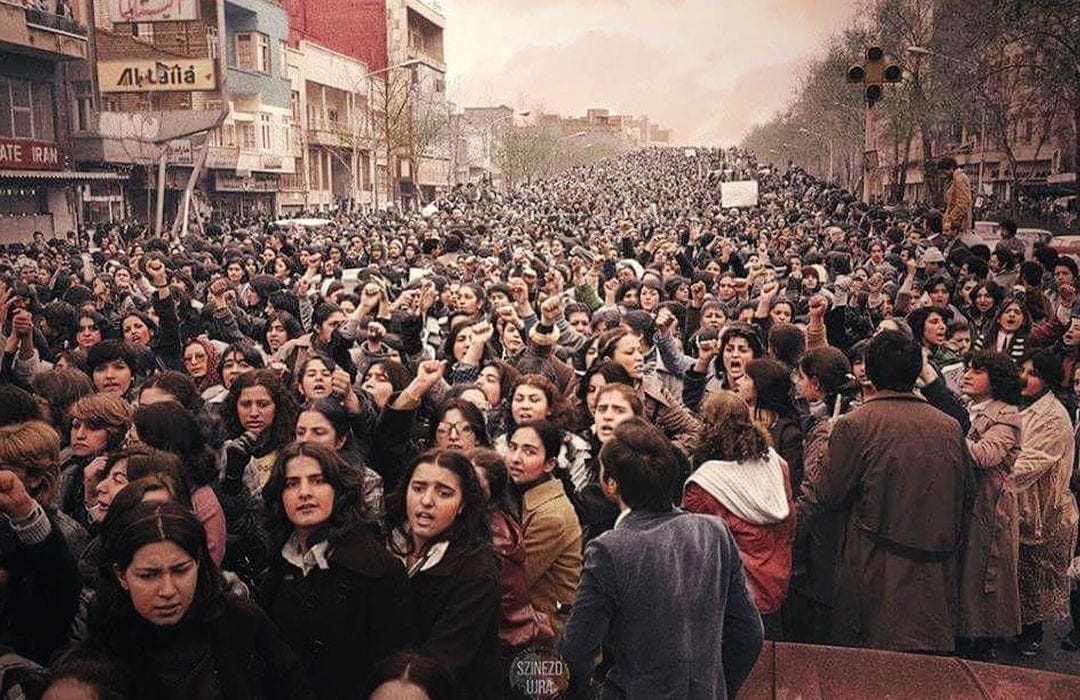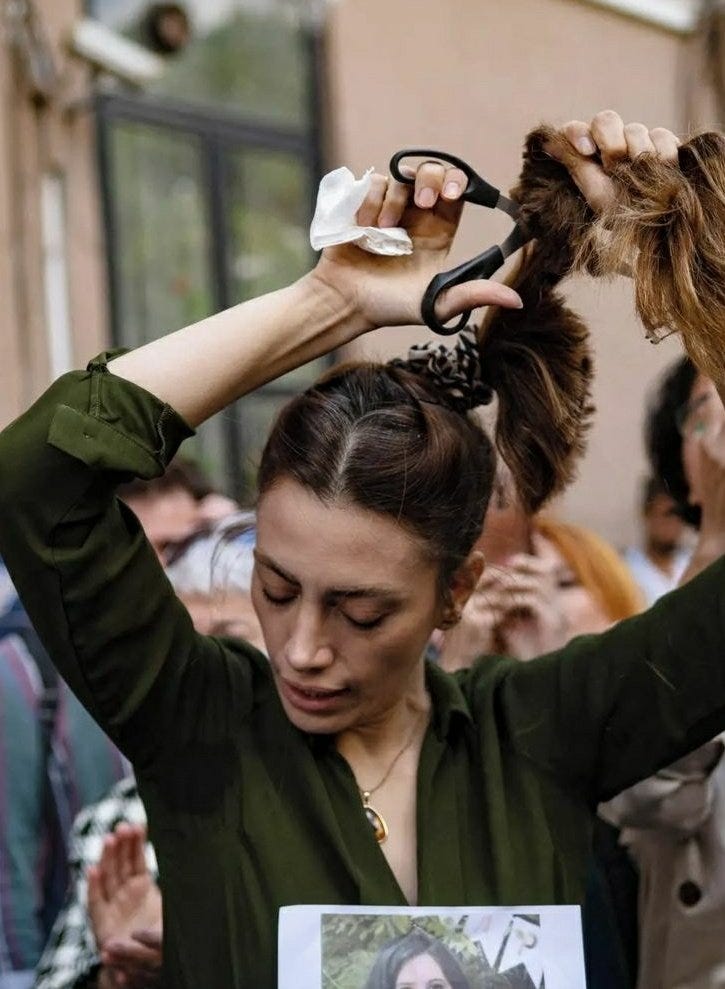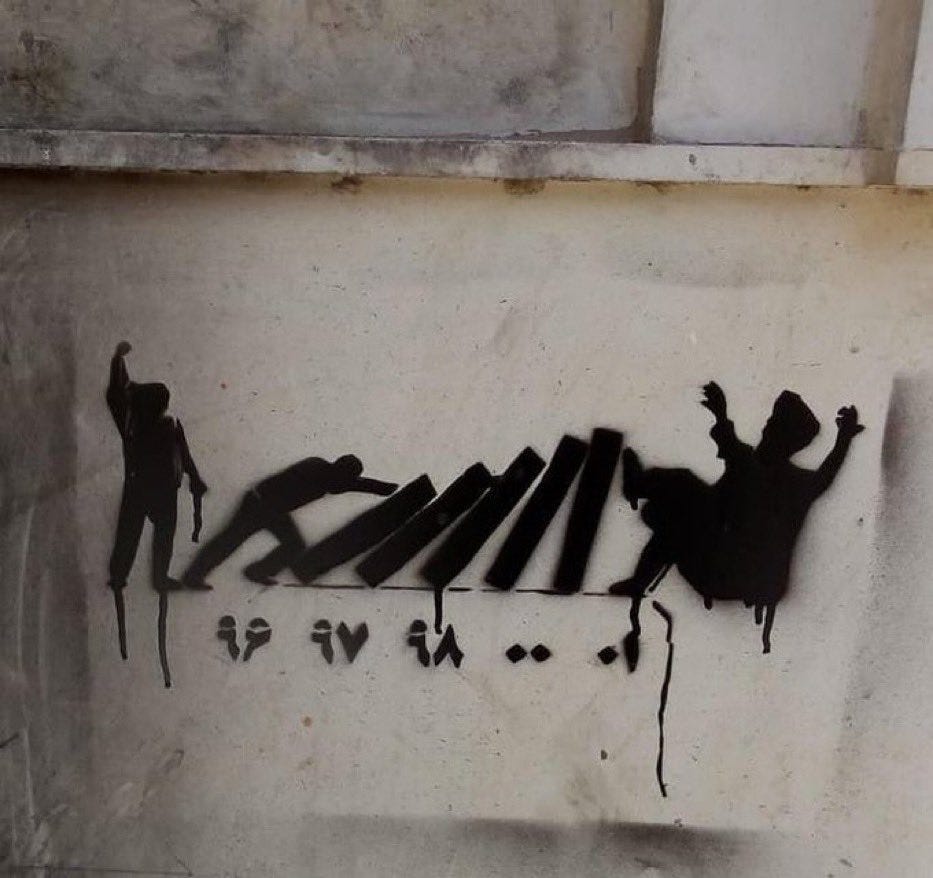

Are Iranian women defining the point of no return?
source link: https://neginsh.medium.com/are-iranian-women-defining-the-point-of-no-return-e146ea4d1d03
Go to the source link to view the article. You can view the picture content, updated content and better typesetting reading experience. If the link is broken, please click the button below to view the snapshot at that time.

Are Iranian women defining the point of no return?

Mahsa Amini, a 22-year-old Kurdish girl, traveled to Tehran on a family holiday. She never returned. She died in the custody of Iran’s morality police, a wing of police that enforces mandatory hijab on Iranian women. Since her death on September 16th, there has been ongoing protest across the country. Mahsa was yet another heartbreaking example that In the Islamic Republic of Iran being a woman is a crime.
Mahsa is not the first woman to lose her life simply because they’re born a woman in Iran. Countless women have lost their lives Some were victims of honor killing like Mona Heidari, others, died escaping rape like Schiler Rasouli, and others, took their own lives simply because they wanted to watch a football match in the stadium and were not allowed or are jailed to be executed only because they wanted to live their lives as who they are the list is long.
But now Iran is at a turning point in its modern history. Since the disputed presidential election in 2009 (popularly known as the green movement), Iranian society has experienced significant shocks on several fronts: the effects of systemic corruption started to show and as a result, the traditional ecosystem of the regime’s cronies started to change. Some lost their stake in the game and turned into opposition while others moved the wealth they had accumulated to Europe and/or North America. Images of their children on social media indicate that they lead lives that contract those advocated by their parents for the rest of society. They drink, dance, wear no hejab, mingle with the opposite sex freely, and have children whose lifestyle contradicts the Islamic Republic’s values.

March 8th 1979, protests against mandatory hijab
At the same time, a growing number of intellectuals have become disillusioned with the reformist agenda and have come to the realization that reform is not possible or meaningful within the framework of a religious dictatorship. They are increasingly aware that the problems with the structure are fundamental, and nothing short of a complete overhaul of the system would bring about real change.
Years of mismanagement of natural resources and public funds have resulted in frequent power cuts, lack of access to safe drinking water in some parts of the country, and of course deadly air pollution. In the past few years, every household has felt the combined effects of this failure, corruption, and economic sanctions.
The unemployment rate is staggeringly high among educated women. In 2020 nearly 70% of unemployment in the educated population were women. Women occupy almost half the seats in universities. The disproportionately high unemployment rate among women points to structural and cultural discrimination barring women’s access to sustained employment opportunities.
Among the less educated segment of society, the dire economic situation has been the driving force behind more recent transformations in the demographics of employment. Jobs that were previously frowned upon for women are now more accepted as many households cannot sustain themselves on one single (usually male) income anymore. As a result, more women have taken up jobs traditionally held by men: women driving trucks or taxis became a common scene. Likewise, the number of women starting and running their home-based businesses has rapidly grown.
In today’s Iran, young women are more informed about their basic human rights. than their predecessors with their rights. Building on the capacities of international Farsi-speaking media and with social media platforms, Iranian activists have circumvented censorship and reached almost all corners of society, spreading information and educational material, and breaking the decade-old barricade that the regime had put in place after the revolution. Women have become more aware of their rights and this time it is not only the highly educated ones.
Conversations around women’s rights have become integral to the public discourse in Iran. Campaigns like “the Iranian Me Too” have highlighted and unearthed a diversity of often unpleasant lived experiences of women and the LGBTQ community in Iran, educating men and women alike on the nature, prevalence, and consequences of sexual harassment and gender-based violence.. . Despite heavy backlash from government authorities and the conservatives men and women, the broader population is now more sensitized to women’s rights and gender diversity.

A woman cutting her hair in solidarity
In the past four decades, the Islamic Republic has notoriously used smart tactics to deter any network-building and grassroots movements. A large portion of the country’s annual defense budget is allocated to acquiring and maintaining state-of-the-art technology to monitor and control cyberspace and brutally crack down on any opposition. Likewise, the regime has systematically discredited, imprisoned, or killed any potential or emerging opposition leader on the political scene.
However, the government will find it more difficult to contain this latest round of protests. Socioeconomic pressure has been felt by many, if not all, strata of the society and it has unintentionally served as a bonding lived experience. The shared pain and pressure coupled with the raised awareness about the utter disregard and regular violation of women’s rights at the legal and societal levels have led to a strong desire for change. When the pressure points among various communities, provinces, professionals, and all genders, clamping down on opposition will prove to be more non-viable every day.
Shortly after the tragic killing of Mahsa, on Monday, September 19th, Iranian feminists called for protests in Tehran. Many men and women took to the streets in defiance of compulsory hijab laws. Women now witness the long-awaited solidarity from their fellow citizens.
Thanks to Chinese surveillance technology and high-tech CCTV cameras in every city occupying streets has become more dangerous for protestors. The police and intelligence forces can now easily identify and arrest protestors. However, people have learned from the bleak days of a brutal crackdown in the past decade when we all witnessed many innocent lives lost on the streets. Today’s protests are rather different, they demonstrate elements of partisan warfare on three different fronts: streets, social media, and households.

A graffiti in Tehran, indicating the growing number of anti-government protests in recent years
Even though there are no official organizers, street protest techniques are visibly more sophisticated. On social media, Iranians who oppose the regime run campaigns to draw international attention to what is going on in Iran. They have been successful in attracting support: as of September 21st, Elon Musk and Anonymous have voiced their support.
The regime can, of course, violently stifle protests, ban social media or even run slick campaigns to distract the public but the opposition has now reached households. It is now ever more challenging to counteract what social, political, and women’s rights activists have done to educate the general public. Every move the government makes to close down on public demands will bring more fuel to the fire.
Iran’s first and second revolutions were led by men but the third will be led by women which I believe means we are in for a better future. Iranian women are innately compassionate, and years of oppression have taught them to be inclusive. They care about child marriage, as many of them have either been or are closely related to one. They believe in the rights of others because they have experienced how it feels when you take someone’s most basic rights away. And, women seem to have the magic dust of unifying Iran -from every ethnic background and every religious or non-religious group: Arab, Balouch, Turk, Fars, Lor, Kurd, Sunni, Zorastrian, Armenian, and much more. They are Iran.
The proof is in Mahsa’s case: She is from the Kurdish minority — an ethnic group that has been systematically oppressed for the past four decades, endlessly fighting for its rights, and always dismissed or silenced by the regimes and its supporters. These days, people all over Iran are chanting in support of Kurds. Many, inside and outside Iran, are reverberating a powerful-and universal-demand chanted by the protestors: “Woman, life, freedom”.
The female revolution might not happen today or tomorrow. It might not even materialize in the next decade. Who knows how revolutions work… But there is one thing we know: You can only resist change for so long. When women collectively fight for their rights and teach their children to do the same, change becomes inevitable. A look at Iran’s protests and social media bears witness to that and confirms we are on the right path. The next generation is already out there demanding its rights — loud and clear.
Recommend
-
 30
30
Robot update If I have one skill, it’s starting a whimsical project and then immediately getting side-tracked by the dozens of yak shaves it ends up spawning. Anyway,
-
 3
3
The Point of 'No Return'
-
 6
6
Website seizures — US seizes 33 Iranian state-run media sites accused of election disinformation Iranian news group ran disinformation campaigns to mislead US voters, US says....
-
 9
9
Possible breach of sovereignty following websites seizure The Justice Department announced Tuesday the seizure of several Iran's state-linked news website domains accusing them of propagating disinf...
-
 8
8
Iranian Draft Bill to Regulate Crypto, Ban Bitcoin Payments – TrustnodesA bill drafted by the Iranian Parliament’s Economic Commission is to set out a framework for regulating cryptos that includes plans to develop a national cryptocurrency.
-
 6
6
Review‘Mario Party Superstars’ is a return to form, save for one baffling, painful featureListen to article(The Washingto...
-
 6
6
The Amazon Rainforest May Be Nearing a Point of No ReturnSatellites spot troubling signals that may portend a transformation from rainforest to savanna, with profound implications for the planet.
-
 6
6
Get better at Product Discovery by defining your starting pointDifferentiate between two types of discovery in order to approach them more effectivelyPhoto by
-
 3
3
Get WIRED for just $29.99 $10. Subscribe Now...
-
 5
5
December 9, 2022 ...
About Joyk
Aggregate valuable and interesting links.
Joyk means Joy of geeK